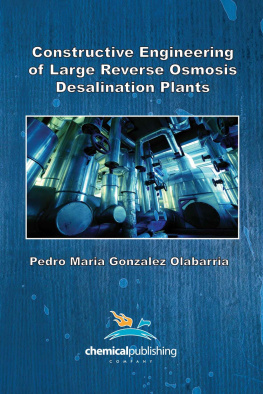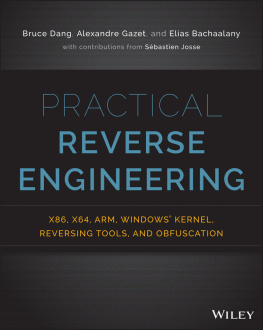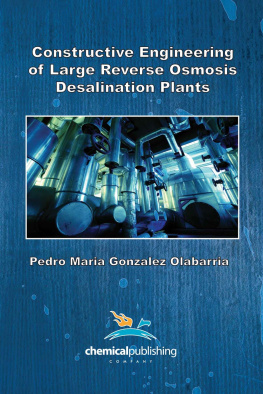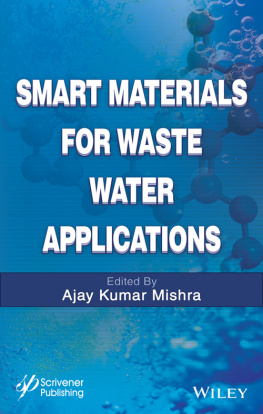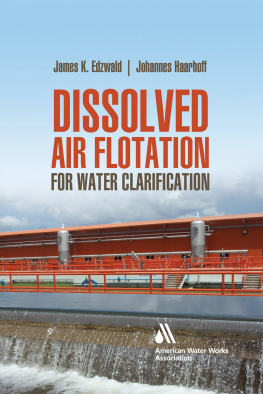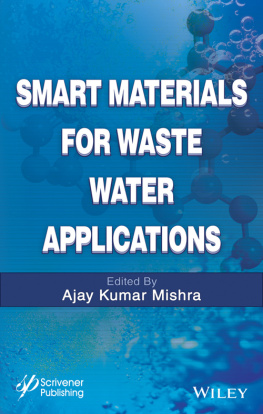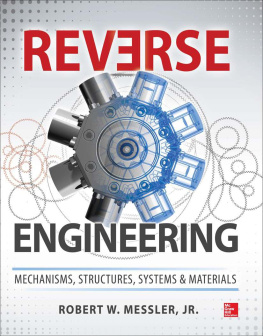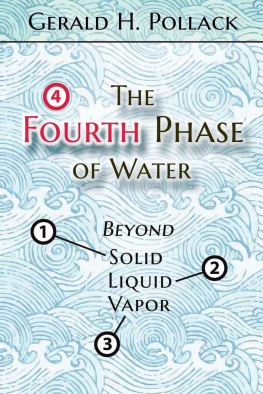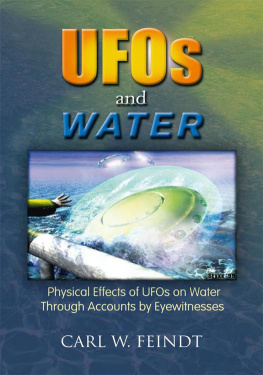
2015 Chemical Publishing Co., Inc. All rights reserved.
No part of this publication may be reproduced, stored in a retrieval system or transmitted in any form or by any means, electronic, mechanical, photocopying, recording, scanning or otherwise, except as permitted under Sections 107 or 108 of the 1976 United States Copyright Act, without either the prior written permission of the Publisher. Requests to the Publisher for permission should be addressed to the Publisher, Chemical Publishing Company, through email at info@chemical-publishing.com.
The publisher and the author make no representations or warranties with respect to the accuracy or completeness of the contents of this work and specifically disclaim all warranties, including without limitation warranties of fitness for a particular purpose.
ISBN: 978-0-8206-0200-4
e-Book ISBN: 978-0-8206-0208-0
First Edition:
Chemical Publishing Company, Inc. 2015
Chemical Publishing Company:
www.chemical-publishing.com
Printed in the United States of America

REVERSE OSMOSIS
BASIC CONCEPTS.
- Permeate: Low-saline and/or purified product.
- Brine: High saline or concentrated brine, called concentrate or reject.
- Raw and Feed water: Raw and Feed water.
- Seawater: Water with a salinity higher than 30,000 ppm.
- Brackish water : Water with a salinity less than 15,000 ppm.
- Recovery: It is the relation between production and raw water flow.
- Osmotic pressure: Difference of pressure between two liquids of different salinity separated with a semipermeable membrane.
- Salinity: Total dissolved solids in water.
- SS (Suspended solids): Suspended solids in water.
- Fouling: Fouling of membranes which can be organic or inorganic.
- TDS (Total dissolved solids): Total dissolved solids in water.
- TOC (Total organic carbon): Total organic carbon.
- DOC (Dissolved organic carbon): Dissolved organic carbon.
- SWRO (Sea water reverse osmosis): Sea water reverse osmosis.
- Production: m/day or MGD (mega gallons per day).
- Recovery: %.
- Salinity: mg/L, gr/m or ppm (parts per million).
- TDS : mg/L or ppm.
- SS : mg/L or ppm.
- Flow: m/h, m/day, gpm or gpd (gallons per minute or gallons per day)
- Pressure: bar, mcw, psig or ft.
- Power: kW or hp (horse power).
- Conductivity: mS/cm or S/cm (mili siemens/cm or micro siemens/cm).
- Turbidity: NTU (nephelometric turbidity unit).
- TOC : mg/L.
- DOC : mg/L.

FEED WATER TYPE AND ANALYSIS.
The major water types being treated by SWRO can be roughly characterized from the total dissolved solids (TDS) content and the organic (TOC).
- High salinity: 15,000-45,000 ppm, Sea water.
- High salinity-brackish water: 5000-15,000 ppm.
- Medium salinity-brackish water: 500-5000 ppm .
- Medium-salinity tertiary effluent with high TOC and biological oxygen demand (BOD) levels and TDS up to 5000 mg/L.
- Low salinity tap waters with TDS up to 500 mg/L.
- Very-low-salinity, high-purity waters (HPW) coming from the first RO systems (double-pass RO system) or the polishing stage in ultrapure water (UPW) systems with TDS up to 50 mg/L.
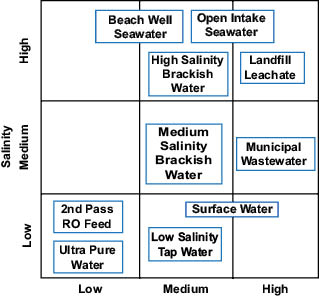
Figure 2.1. Type of water in function of salinity.
Depending on the type of water source:
- Open intake water.
- Well water.
- Microfiltration and Ultrafiltration water.
- Water from reverse osmosis.
Elements of feed water characteristics for reverse osmosis
Cations | Anions | Metals | Other elements |
Calcium | Carbonates | Iron | Silica |
Magnesium | Bicarbonate | Aluminum | Boron |
Potassium | Sulfates | Manganese | Turbidity |
Sodium | Chlorines | TSS |
Estroncium | Nitrates | TOC |
Barium | Fluoride | PH |
Amonium | Temperature |
Conductivity |
Seawater with TDS of 35,000 mg/L is considered standard seawater, constituting, the largest amount of water worldwide. The composition is nearly same all over the world. The actual TDS content may, however, vary within wide limits.
In the next table, water salinity in different areas are shown:
Mediterranean | Red sea | Atlantic |
Na + | 11,177 | 12,300 | 11,520 |
Ca ++ | | | |
K + | | | |
Mg ++ | 1355 | 1700 | 1320 |
Cl - | 20,530 | 34,000 | 20,600 |
SO -- | 2488 | 3400 | 2910 |
COH - | | | |
pH | 7.9 | 8.2 | 8.1 |
TDS | 36,720 | 47,000 | 37,830 |
As a consequence of the high salinity of seawater involving a high osmotic pressure, the recovery of the system is limited to typically 40 to 50%.
It is necessary to analyze independently the parameters and characteristics of water which affect the reverse osmosis process.
1.Salinity.
TDS, in water treatment, is the inorganic residue left after the filtration of colloidal and suspended solids and then the evaporation of a known volume of water. Feed or permeate TDS, in RO design projections, can also be estimated by applying a conversion factor to the conductivity of the solution. TDS can also be determined in the field by use of a TDS meter. TDS meter measures the conductivity of the water and then apply a conversion factor that reports TDS to a known reference solution (e.g. ppm sodium chloride or ppm potassium chloride). The user is cautioned that TDS levels for water with a mixture of ions and determined from conductivity measurements may not agree with TDS calculated as a sum of the ions. As a rough rule of thumb, relationship between conductivity and salinity ranges between 1.38 for a salinity of 44,000 ppm and 1.43 for a salinity of 36,000 ppm.
It affects directly to operation pressure of reverse osmosis, increasing when increasing salinity of feedwater. It also affects to the quality of permeate, getting worse with the increase of feed water salinity.

Figure 2.2. Effect of feed concentration on permeate flow.
2.Scaling.
Scaling of RO membranes may occur when sparingly soluble salts are concentrated within the element beyond their solubility limit. For example, if a reverse osmosis plant is operated at 50% recovery, the concentration in the concentrate stream will be almost double the concentration in the feed stream. As the recovery of a plant is increased, so it is the risk of scaling. The most common sparingly soluble salts encountered are:
Next page
